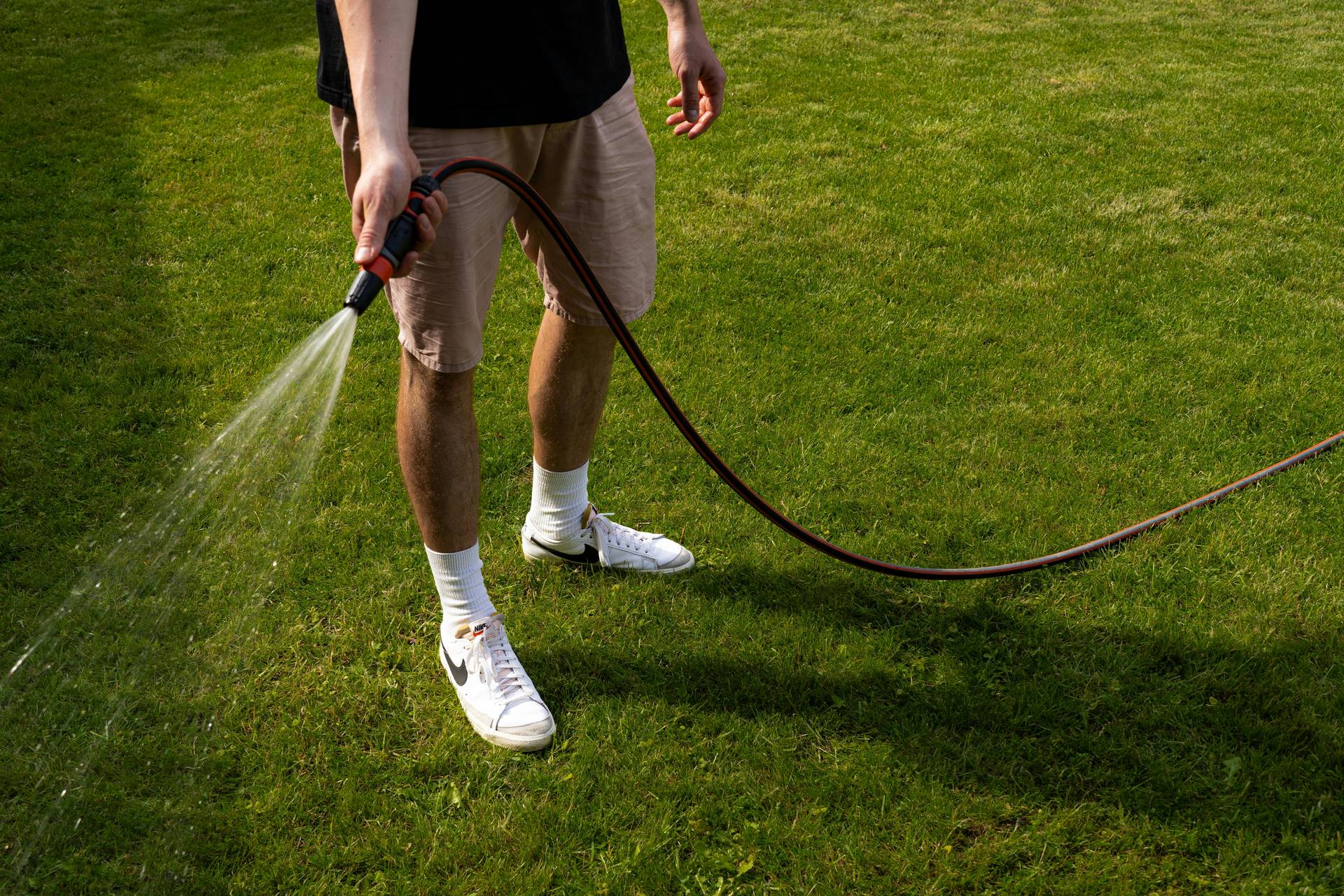Watering your lawn might seem straightforward, but doing it correctly is key to maintaining a healthy, lush, and green yard. Proper watering practices not only help grass grow strong but also save water and reduce maintenance efforts. This guide will walk you through the essential tips and techniques for effective lawn watering.
Why Proper Lawn Watering is Important
- Healthy Growth: Grass needs water to carry out photosynthesis and absorb essential nutrients from the soil. Proper watering ensures your lawn has the moisture it needs to thrive.
- Drought Resistance: Lawns that are watered correctly develop deeper root systems, making them more resilient to drought and heat stress.
- Disease Prevention: Overwatering can lead to waterlogged soil, promoting fungal diseases and root rot. Underwatering, on the other hand, can weaken grass and make it susceptible to pests and diseases.
- Efficient Water Use: Proper watering techniques help conserve water, making your lawn care routine more sustainable and cost-effective.
When to Water Your Lawn
The best time to water your lawn is early in the morning, between 6 AM and 10 AM. During this time, temperatures are cooler, and the wind is usually calm, which allows the water to soak into the soil without evaporating quickly. Watering in the evening can leave your lawn damp overnight, creating a perfect environment for disease.
How Often to Water Your Lawn
The frequency of watering depends on several factors, including grass type, soil type, and local climate conditions. A general rule of thumb is to water your lawn deeply and infrequently:
- Cool-Season Grasses: These grasses, such as Kentucky bluegrass, fescue, and ryegrass, typically need about 1 to 1.5 inches of water per week, including rainfall. This amount can be divided into two to three watering sessions per week.
- Warm-Season Grasses: Grasses like Bermuda, St. Augustine, and zoysia thrive in warmer climates and usually require about 0.5 to 1 inch of water per week, including rainfall. These grasses often need less frequent watering than cool-season varieties.
- Soil Type: Sandy soils drain quickly and may need more frequent watering, while clay soils retain moisture longer and can be watered less often.
How Much Water to Use
To determine how much water your lawn needs, use the following methods:
- The Tuna Can Test: Place several empty tuna cans or similar containers around your lawn before watering. Run your sprinkler system for 15 minutes, then measure the depth of water in the cans. This helps you determine how long it takes to apply 1 inch of water. Adjust your watering time accordingly.
- Soil Moisture Check: After watering, check the soil moisture by sticking a screwdriver or soil probe into the ground. It should penetrate easily to a depth of 6 to 8 inches if the soil is adequately moist.
Efficient Watering Techniques
- Deep Watering: Water your lawn deeply to encourage deep root growth. This helps grass withstand drought and reduces the need for frequent watering.
- Avoid Light Watering: Light, shallow watering encourages shallow root growth and can lead to a weak lawn that requires more frequent watering.
- Cycle and Soak: If your lawn has compacted soil or slopes, use the cycle and soak method. Water for 5-10 minutes, let the water soak in for an hour, and then water again. This prevents runoff and ensures the water reaches the roots.
- Water Evenly: Ensure your sprinkler system covers your lawn evenly. Adjust sprinklers to avoid overwatering certain areas and underwatering others.
Choosing the Right Irrigation System
- Sprinkler Systems: Automatic sprinkler systems are convenient and can be programmed to water at optimal times. Ensure the system is properly maintained and adjusted for even coverage.
- Rotary Sprinklers: These are ideal for large lawns as they distribute water over a wide area.
- Oscillating Sprinklers: Suitable for smaller lawns, these sprinklers move back and forth, providing even coverage.
- Drip Irrigation: Best for garden beds and shrubs, drip irrigation delivers water directly to the roots, reducing evaporation and runoff.
Signs of Overwatering and Underwatering
- Overwatering:
- Puddles or runoff after watering
- Mushy soil
- Yellowing grass
- Fungal growth or mushrooms
- Underwatering:
- Dry, brittle soil
- Grass that remains flat after being stepped on
- Brown or wilted grass
- Increased presence of pests
Adapting to Seasonal Changes
- Spring: Increase watering as temperatures rise and grass begins to grow actively.
- Summer: Water deeply but less frequently to encourage drought resistance. Early morning watering helps mitigate the effects of heat.
- Fall: Gradually reduce watering as temperatures cool. Fall is also a good time to aerate your lawn, improving water penetration.
- Winter: In warmer climates, occasional watering may be needed during dry periods. In colder climates, lawns typically go dormant and require little to no watering.
Conclusion
Proper watering is a fundamental aspect of lawn care that directly impacts the health and appearance of your grass. By understanding when, how often, and how much to water, you can ensure your lawn stays green and healthy year-round. Adopting efficient watering techniques and choosing the right irrigation system will not only enhance your lawn’s beauty but also conserve water and reduce maintenance efforts. For best results, consider consulting our professional lawn care service to tailor a watering schedule to your specific lawn needs.

